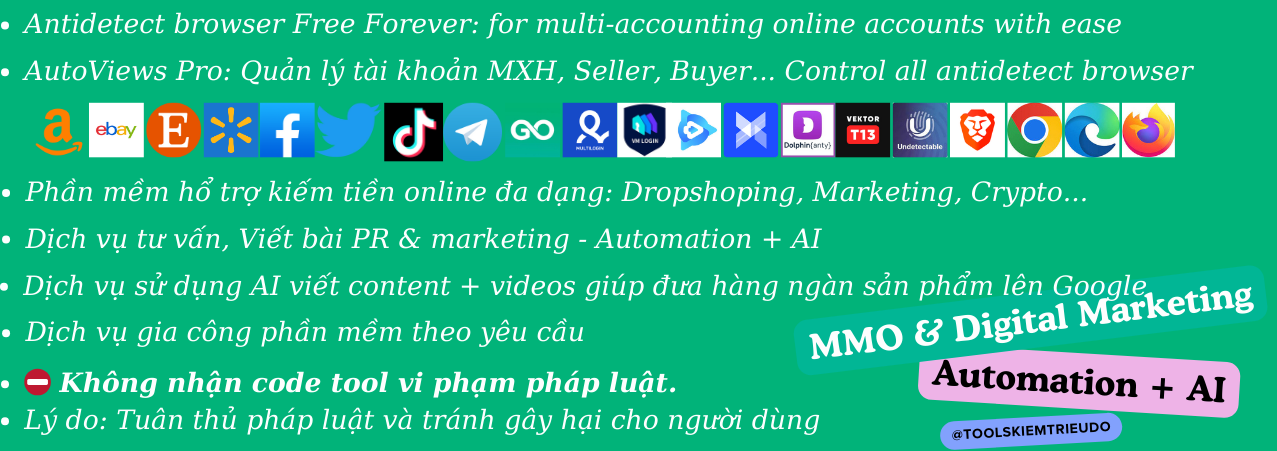Tối ưu hóa tốc độ website: Hướng dẫn tối ưu hóa ảnh, video và tập tin lớn
Tiếng Việt
Tốc độ tải trang là một trong những yếu tố quan trọng nhất ảnh hưởng đến trải nghiệm người dùng và thứ hạng website trên công cụ tìm kiếm. Trong đó, ảnh, video và tập tin lớn là những yếu tố có thể làm giảm tốc độ tải trang của website. Do đó, việc tối ưu hóa những yếu tố này là điều cần thiết để cải thiện tốc độ tải trang và mang lại trải nghiệm người dùng tốt hơn.
Cách tối ưu hóa ảnh
Dưới đây là một số cách để tối ưu hóa ảnh cho website:
Sử dụng kích thước ảnh phù hợp với thiết bị người dùng.
Sử dụng định dạng ảnh nhẹ như JPEG, PNG hoặc WebP.
Giảm dung lượng ảnh bằng các công cụ như Photoshop, GIMP hoặc ImageOptim.
Thêm thẻ alt cho ảnh để giúp Google hiểu nội dung của ảnh.
Cách tối ưu hóa video
Để tối ưu hóa video cho website, bạn có thể thực hiện các bước sau:
Sử dụng định dạng video nhẹ như MP4 hoặc WebM.
Giảm độ phân giải video nếu có thể.
Tối ưu hóa tốc độ bit video.
Sử dụng các công cụ như YouTube hoặc Vimeo để lưu trữ và phát video.
Cách tối ưu hóa tập tin lớn
Tương tự như ảnh và video, bạn có thể tối ưu hóa tập tin lớn bằng cách giảm kích thước và dung lượng của chúng. Bạn có thể sử dụng các công cụ như WinRAR hoặc 7-Zip để nén tập tin.
Kết luận
Tối ưu hóa ảnh, video và tập tin lớn là một việc cần thiết để cải thiện tốc độ tải trang và mang lại trải nghiệm người dùng tốt hơn. Bằng cách thực hiện các bước đơn giản trên, bạn có thể giúp website của mình tải nhanh hơn và thu hút nhiều người dùng hơn.
English
Website speed is one of the most important factors that affects user experience and website ranking on search engines. In this, images, videos, and large files can slow down the loading speed of a website. Therefore, optimizing these factors is essential to improve website loading speed and provide a better user experience.
How to optimize images
Here are some ways to optimize images for your website:
Use image sizes that are appropriate for the user’s device.
Use lightweight image formats such as JPEG, PNG, or WebP.
Reduce image size using tools like Photoshop, GIMP, or ImageOptim.
Add alt tags to images to help Google understand the content of the image.
How to optimize videos
To optimize videos for your website, you can follow these steps:
Use lightweight video formats such as MP4 or WebM.
Reduce video resolution if possible.
Optimize video bitrate.
Use services like YouTube or Vimeo to store and play videos.
How to optimize large files
Similar to images and videos, you can optimize large files by reducing their size and size. You can use tools like WinRAR or 7-Zip to compress files.
Conclusion
Optimizing images, videos, and large files is essential to improve website loading speed and provide a better user experience. By following the simple steps above, you can help your website load faster and attract more users.
Additional tips
Use a content delivery network (CDN) to deliver images and videos from servers that are closer to your users.
Minify HTML, CSS, and JavaScript files to reduce their size.
Use a caching plugin to store static files on the user’s computer.
Test your website’s speed using a tool like Google PageSpeed Insights.




